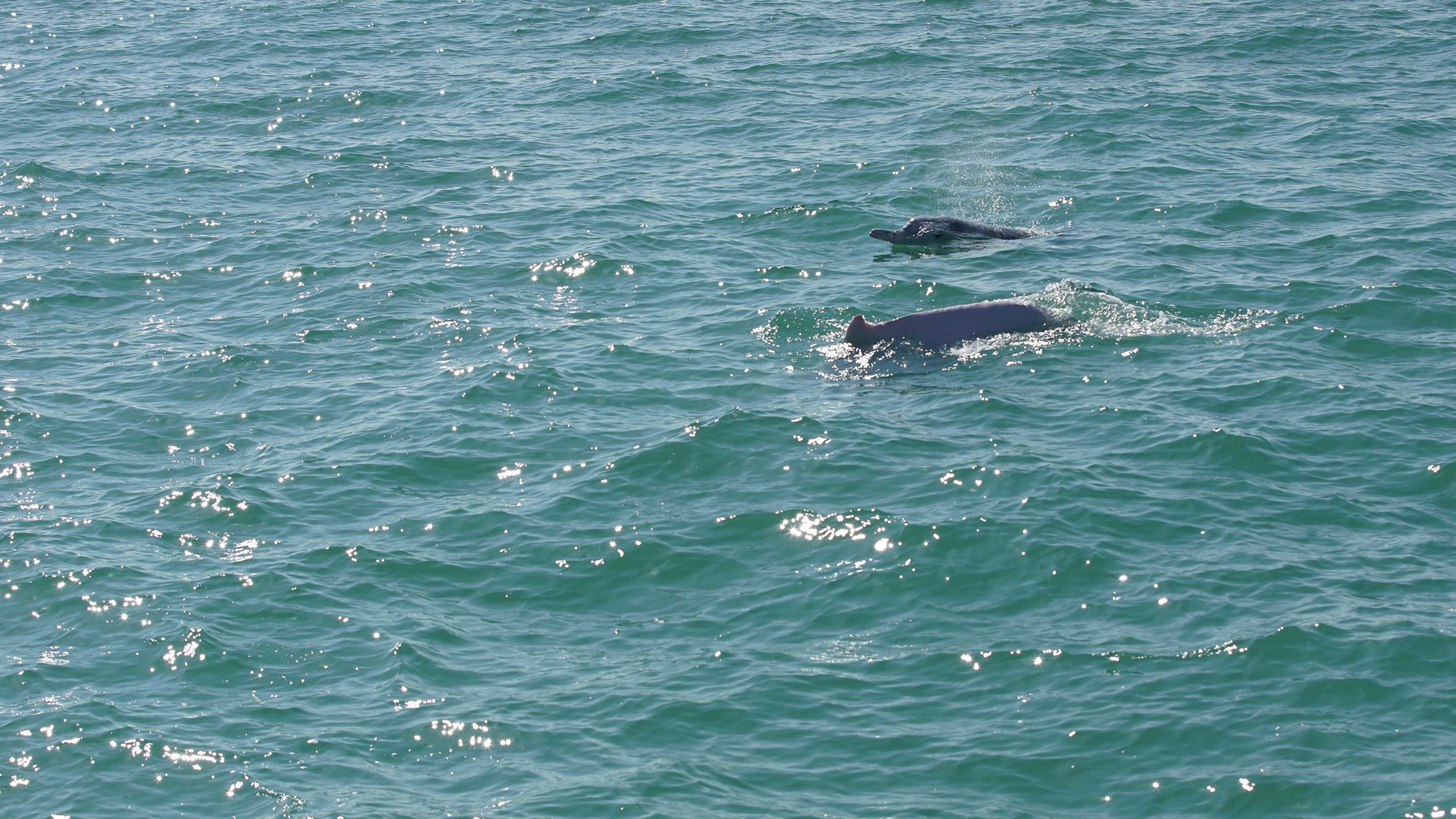It’s possible that I shall make an ass of myself. But in that case one can always get out of it with a little dialectic. I have, of course, so worded my proposition as to be right either way (K.Marx, Letter to F.Engels on the Indian Mutiny)
Friday, May 01, 2020
texts
DRAGGING DOWN HEAVEN
Jesus the Magician And Handler Of Spirits
HELEN INGRAM
PHD THESIS 2007
https://archive.org/details/IngramHelenDraggingDownHeaven.JesusAsMagicianAndManipulatorOfSpiritsInTheGospels/page/n19/mode/2up
CLICK IMAGES TO ENLARGE


https://archive.org/details/IngramHelenDraggingDownHeaven.JesusAsMagicianAndManipulatorOfSpiritsInTheGospels/page/n19/mode/2up
CLICK IMAGES TO ENLARGE
The events of that Good Friday would remain dormant until an undergraduate lecture given by Prof. Mark Goodacre (who would later become my PhD thesis supervisor) during my final undergraduate years at Birmingham University in 2001. The two-year New Testament studies course consisted of a series of lectures intended to highlight the many roles applied to Jesus in Biblical Studies, each being inserted or removed like a set of optician’s slides to see whether the Gospel content became any clearer; Jesus the teacher, Jesus the prophet, Jesus the healer, Jesus the exorcist and so forth. One of these lectures introduced me to the character of ‘Jesus the magician’ and the work of Prof. Morton Smith, who claimed that Jesus’ conduct within the Gospel material constituted a ‘coherent, consistent and credible picture of a magician’s career.’ The theory that the historical Jesus was actively practicing magic and that this behaviour is reflected in the Gospel materials was a very intriguing proposal and immediately stimulated a personal interest in this field of research.
http://wasjesusamagician.blogspot.com/
https://ethos.bl.uk/OrderDetails.do?uin=uk.bl.ethos.446336
(Pages 76-81; Size: 17K)
MANY a time Atlantis is spoken of under another name, one unknown to modern commentators. It stands to reason that neither the name of Lemuria nor even of Atlantis are the real archaic names of the lost continents, but have been adopted for the sake of clarity. Most of the correct names of the countries and continents of both are given in the Puranas. The power of names is great, and was known since the first men were instructed by the divine masters. As Solon had studied Atlantis, he translated the "Atlantean" names into names devised by himself. In connection with the continent of Atlantis, it is desirable to bear in mind that the accounts which have come down to us from the old Greek writers contain a confusion of statements, some referring to the Great Continent, and others to Plato's "Atlantis," the small island of Poseidonis. It has become customary to take them all as referring to the latter only, but that this is incorrect is evident from the incompatibility of the various statements as to the size, etc., of Atlantis.
To make a difference between Lemuria and Atlantis, the ancient writers referred to the latter as the Northern or Hyperborean Atlantis, and to the former as the Southern. The Atlantic portion of Lemuria, which was a gigantic land, was the geological basis of what is generally known as Atlantis. The latter, indeed, must be regarded rather as a development of the Atlantic prolongation of Lemuria, than as an entirely new land mass upheaved to meet the special requirements of the Fourth Root Race. The Fourth Race Atlanteans were developed from a nucleus of Northern Lemurian Third Race men, centered, roughly speaking, toward a point of land in what is now the mid-Atlantic Ocean. In those days, large portions of the future continent of Atlantis were yet part and parcel of the Ocean floors. Their continent was formed by the coalescence of many islands and peninsulas which were upheaved in the ordinary course of time and became ultimately the true home of the great Race known as the Atlanteans. Hence the first Atlanteans, the earliest pioneers of the Fourth Race, were born on the Lemurian continent.
Atlantis produced the first physically human man, whose origin began with the last sub-races of the Third Root Race. With the Fourth Race we reach the first purely human period, the first progeny of semi-divine man after his separation into sexes -- hence the first-begotten and humanly born mortals. Those who were hitherto semi-divine beings, imprisoned in bodies which were human only in appearance, became physiologically changed. Herodotus recounts the tradition of the Atlantes -- a people of Western Africa which gave its name to Mount Atlas -- who were vegetarians, and "whose sleep was never disturbed by dreams." If the Atlanteans never had their sleep disturbed by dreams, it was because that particular tradition is concerned with the earliest Atlanteans, whose physical frame and brain were not yet sufficiently consolidated, in the physiological sense, to permit the nervous centers to act during sleep.
All ancient writings -- prose and poetry -- are full of the reminiscences of the Lemuro-Atlanteans, the first physical races, though the Third and Fourth in number. Hesiod records the tradition about the men of the Age of Bronze, whom Jupiter had made out of ashwood, and who had hearts harder than diamond. Clad in bronze from head to foot, they passed their lives in fighting. Monstrous in size, endowed with a terrible strength, invincible arms and hands descended from their shoulders, says the poet. Such were the giants of the first physical races. The "one-eyed" Cyclopes, the giants fabled as the sons of Coelus and Terra, were the last three sub-races of the Lemurians, the "one eye" referring to the Wisdom Eye; for the two front eyes were developed as organs only in the beginning of the Fourth Race. But we can easily believe that the Titans and Cyclopes of old really belonged to the Fourth (Atlantean) Race, and that all the subsequent legends and allegories found in the Hindu Puranas and the Greek Hesiod and Homer, were based on the hazy reminiscences of real Titans -- men of a superhuman, tremendous physical power, which enabled them to defend themselves, and hold at bay the gigantic monsters of the Mesozoic and early Cenozoic times -- and of actual Cyclopes, three-eyed mortals.
The possession of a physical third eye, we are told, was enjoyed by the men of the Third Race down to nearly the middle period of the Third Sub-Race of the Fourth Root Race, when the consolidation and perfection of the human frame made it disappear from the outward anatomy of man. Psychically and spiritually, however, its mental and visual perceptions lasted till nearly the end of the Fourth Race, when its functions, owing to the materiality and depraved condition of mankind, died out altogether before the submersion of the bulk of the Atlantean continent. The "eye of Siva" did not become entirely atrophied before the close of the Fourth Race.
What was the Religion of the Third and Fourth Races? In the common acceptance of the term, neither the Lemurians, nor yet their progeny, the Atlanteans, had any, as they knew no dogma, nor had they to believe on faith. No sooner had the mental eye of man been opened to understanding, than the Third Race felt itself one with the ever-present as the ever to be unknown and invisible ALL, the One Universal Deity. Endowed with divine powers, and feeling in himself his inner God, each felt he was a Man-God in his nature, though an animal in his physical self. The struggle between the two began from the very day they tasted of the fruit of the Tree of Wisdom, a struggle for life between the spiritual and the psychic, the psychic and the physical. Those who conquered the lower principles by obtaining mastery over the body, joined the "Sons of Light." Those who fell victims to their lower natures, became the slaves of matter. From "Sons of Light and Wisdom" they ended by becoming the "Sons of Darkness." They had fallen in the battle of mortal life with Life Immortal, and all those so fallen became the seed of the future generations of Atlanteans.
Thus the first Atlanteans, born on the Lemurian continent, separated from their earliest tribes into the righteous and the unrighteous: into those who worshipped the one unseen Spirit of Nature, the ray of which man feels within himself -- or the Pantheists; and those who offered fanatical worship to the Spirits of the Earth, the dark Cosmic, anthropomorphic Powers, with whom they had made alliance. It was the Atlanteans who became the first "Sacrificers" to the god of matter. Such was the secret and mysterious origin of all the subsequent and modern religions, especially of the worship of the later Hebrews for their tribal god.
The Continent of Atlantis at its height covered the whole of the North and South Atlantic regions, as well as portions of the North and South Pacific, and had islands even in the Indian Ocean (relics of Lemuria). The India of the prehistoric ages was doubly connected with the two Americas, India being the center of the seven great continents before the submersion of the great continent of Atlantis. A traveler, starting from the South, could have at one time walked over from Siam, crossed the Polynesian Islands and trudged into any part of the continent of South America. Again, a pedestrian from the North might then have reached, hardly wetting his feet, the Alaskan peninsula, through Manchuria, across the future Gulf of Tartary, the Kurile and Aleutian Islands, thence into North America.
A Master wrote: "The Fourth Race had its period of the highest civilization." In the early part of the Tertiary age, the most brilliant civilization the world has ever known flourished. The civilization of the Atlanteans was greater even than that of the Egyptians.
The Sanskrit language, as now known, was not spoken by the Atlanteans. The predominating element in Atlantis was a language which has now survived but in the dialects of some American tribes, and in the Chinese speech of the inland Chinamen, the mountainous tribes of Kivang-ze -- a language which was an admixture of the agglutinative and the monosyllabic, as it would be called by modern philologists. It was, in fact, the language of the "Red-Yellow" second or middle geological stock. "What would you say to our affirmation that the Chinese -- the aborigines who belong in their unallied nationality wholly to the highest and last branch of the Fourth Race -- reached their highest civilization when the Fifth had hardly appeared in Asia?" Even the historical works of China are full of such reminiscences about the Fourth Race. In Shoo-King, anyone can read in the French translation, "When the Mao-tse" -- that race, explains the Annotator -- "which had retired in days of old to the rocky caves, and the descendants of whom are said to be still found in the neighborhood of Canton...." The surviving handful of these inland Chinese are of very high stature.
The Atlanteans were giants, whose physical beauty and strength reached their climax, in accordance with evolutionary law, toward the middle period of the fourth sub-race. The records speak of their giant intellect and their giant size. They built great images, 27 feet high -- the size of their bodies. The statues found by Cook on Easter Island measured almost all 27 feet high and eight feet across the shoulders. The days when matter would be in its full sway on earth and man would reach the apex of physical development in stature and animality, came to pass during the period of the middle point of their race. Since then, man began decreasing in stature, strength and years.
Writing was perfectly known to the Atlanteans. It was invented by them, and not at all by the Phoenicians. It was from the Fourth Race that the early Aryans got their knowledge of the "bundle of wonderful things," the Sabha and Mayasabha, mentioned in the Mahabharata, the gift of Mayasur to the Pandavas. It is from them that they learned aeronautics, Viwan Vidya (the knowledge of flying in air-vehicles), and therefore their great arts in meteorography and meteorology.
The Secret Doctrine assigns from four to five million years between the incipient and the final evolution of the Fourth Root Race, on the Lemuro-Atlantean continent. In the Eocene age, even in its very first part, the great cycle of the Fourth Race men had already reached its highest point and the great continent, the father of nearly all the present continents, showed the first symptoms of sinking. Atlantis sank, and its chief portions had disappeared, before the end of the Miocene period.
(From Histoire des Vierges): "One of the most ancient legends of India, preserved in the temples by oral and written tradition, relates that several hundred thousand years ago, there existed in the Pacific Ocean an immense continent which was destroyed by geologic upheaval. The high plateaux of Hindustan and Asia. According to this hypothesis, would only have been represented in those days by great islands contiguous to the central continent. ... According to the Brahmans, this country had attained a high civilization, and the peninsula of Hindustan, enlarged by the displacement of the waters at the time of the grand cataclysm, has but continued the chain of the primitive traditions born in this place. These traditions give the name of Rutas to the people who inhabited this immense continent, and from their speech was derived the Sanskrit."
The Hindus possess recorded observations from the date of the first Great Flood within the Aryans, historical memory. One million years are allowed for our present Aryan Fifth Race, the first sub-race of which witnessed the doom of the last of the populations of the giant Atlanteans, that which submerged the last portions of Atlantis, 850,000 years ago. The Secret Doctrine declares that most of the later island Atlanteans perished in this interval between 850,000 and 700,000 years ago, and that the Aryans were 200,000 years old when the first great island or continent was submerged. But the destruction of the famous island of Ruta, in the later Pliocene times, and the smaller one of Daitya, must not be confounded with the submersion of the main continent of Atlantis during the Miocene period.
After the submersion of Ruta (850,000 years ago) there was no great submersion until the day of Plato's Atlantis, or Poseidonis, which belongs to historical times. Plato's Atlantis perished between water below and fire above; its great mountain vomiting flames all the while. The "fire vomiting monster" (the peak of Teneriffe?) survived alone out of the ruins of the unfortunate island. A number of small islands scattered around Poseidonis had been vacated, in consequence of earthquakes, long before the final catastrophe. The last of the islands of the Great Atlantis -- Poseidonis, which lasted until about 12,000 years ago -- alone remained in the memory of man, thanks to some written records.
COMPILER'S NOTE: The following is a separate item which followed the above article but was on the same page. I felt it was useful to include it here:
By such slow aggregation has mythology grown from the first. The very nursery tales of this generation, were the nursery tales of primeval races. They migrate from east to west, and again from west to east; now expanded into the "tale divine" of bards, now shrunk into a popular rhyme. This is an approach to that universal language which men have sought in vain. This fond reiteration of the oldest expressions of truth by the latest posterity, content with slightly and religiously retouching the old material, is the most impressive proof of a common humanity.
The hidden significance of these fables which is sometimes thought to have been detected, the ethics running parallel to the poetry and history, are not so remarkable as the readiness with which they may be made to express a variety of truths. As if they were the skeletons of still older and more universal truths than any whose flesh and blood they are for the time made to wear....
To some extent, mythology is only the most ancient history and biography. So far from being false or fabulous in the common sense, it contains only enduring and essential truth, the I and you, the here and there, the now and then, being omitted. Either time or rare wisdom writes it.
--HENRY D. THOREAU
A Judge Sided With Native American Tribes Challenging How The Trump Administration Is Handling Coronavirus Relief Money
A federal judge blocked the Treasury Department from sending coronavirus relief money meant to benefit Native American tribes to certain for-profit Native corporations.
Zoe TillmanBuzzFeed News Reporter
Reporting From Washington, DC Posted on April 27, 2020
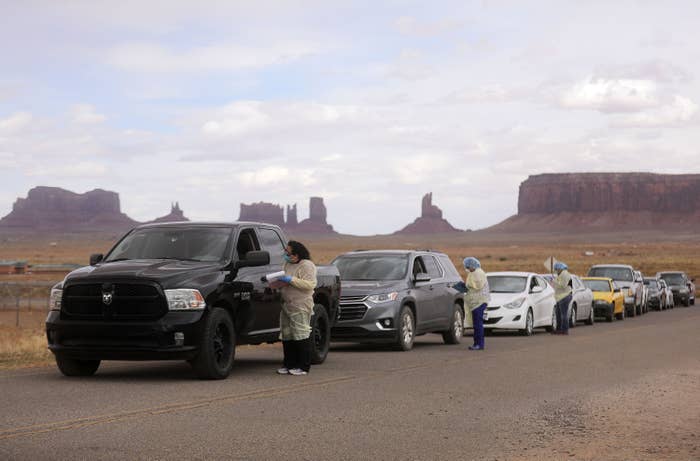
Kristin Murphy / the Deseret News via AP
People line up to get tested for COVID-19 in Oljato-Monument Valley, Utah, April 16. The Navajo Nation has one of the highest per capita COVID-19 infection rates in the country.
WASHINGTON — The Trump administration cannot distribute coronavirus relief money intended to help Native American communities respond to the coronavirus pandemic to certain for-profit Native corporations, a federal judge ruled Monday evening.
It's the first loss in court for the government over how administration officials are managing the billions of dollars that Congress approved in the Coronavirus Aid, Relief, and Economic Security (CARES) Act. Dozens of tribal governments raced to court in the past two weeks to challenge the Treasury Department's decision to make Alaska Native Corporations (ANCs) eligible for $8 billion in funding set aside to benefit Native American tribes.
The tribal governments that sued argued that they stood to lose out on potentially millions of dollars if they had to share the pool with ANCs. The ANCs, established by a 1971 law governing how Alaska Natives manage and benefit from their land, have shareholders — primarily members of Native American tribes — and boards of directors, and they serve as holding companies for businesses that range from construction and pipeline maintenance to janitorial and food services. There are 574 federally recognized Native American tribes and 237 ANCs across Alaska, according to court papers.
Tribal governments argued they needed the money to deliver services to communities hit hard by COVID-19, the disease caused by the novel coronavirus, including providing health care, buying personal protective equipment, and delivering meals to the elderly and children. They asked the court to enter an immediate injunction since the Treasury Department was set to begin sending the money as early as April 28.
US District Judge Amit Mehta, who heard arguments last week, agreed with the tribal governments that ANCs didn't qualify as the type of "tribal government" that Congress referenced in approving the relief money. Under the definition of "tribal government" that Congress relied on in the CARES Act, the judge wrote, a tribal government had to be eligible for special programs provided by the US government to Native Americans, and it had to be formally recognized by the US government as the governing body of a tribe. The ANCs don't fall into those categories, he wrote.
Mehta noted that Congress put the language about funding for tribal governments in a section of the CARES Act dealing with other "governments," including states, the District of Columbia, Puerto Rico, the US Virgin Islands, Guam, the Commonwealth of the Northern Mariana Islands, and American Samoa.
"Reading the CARES Act to allow the Secretary to disburse Title V dollars to for-profit corporations does not jibe with the Title’s general purpose of funding the emergency needs of 'governments,'" he wrote.
“The Chehalis Tribe is pleased that the court saw what was obvious to many of us. Corporations have no place taking dollars that were allocated for tribal governments, period!” said Harry Pickernell, senior chair of the Chehalis Tribe, one of the tribal governments that sued. “This ruling will ensure that tribes and tribal members will reap the intended benefits that Congress envisioned in the CARES Act. This ruling will help tribal governments to lead in the aid and recovery of their people.”
The administration and an ANC that filed a friend-of-court brief argued that the corporations were in a position to deliver services to communities, even if they didn't have the same government-to-government relationship that federally recognized tribes do with the US government. Mehta wrote that no one had offered any evidence that ANCs are actually providing public services during the pandemic, however.
Mehta also rejected the administration's argument that the court shouldn't get involved in the case at all. The judge wrote that federal courts had a role to play in resolving disputes over how agencies interpret laws passed by Congress — in this case, what exactly Congress meant by using the term "tribal government." He also didn't accept the government's argument that the fact that the money was intended as "emergency" relief meant the court couldn't intervene.
"Thus, while the Secretary’s decisions as to how much to disburse might not be reviewable, his decisions concerning to whom to disburse those funds most certainly is," Mehta wrote, adding in a footnote that he wasn't saying a court couldn't review how much money the Treasury Department paid out in the future, either.
Although the judge blocked the administration from sending relief money to the corporations, he did not order the government to distribute the entire $8 billion pool to the federally recognized tribes. The government could award money to ANCs and hold onto it until the legal fight is over; the judge entered a preliminary injunction on Monday, which is not a final order.
The Treasury Department and Justice Department did not immediately return requests for comment.
If you're someone who is seeing the impact of the coronavirus firsthand, we’d like to hear from you. Reach out to us via one of our tip line channels.
MORE ON THIS https://plawiuk.blogspot.com/search?q=NAVAJO

Zoe Tillman is a senior legal reporter with BuzzFeed News and is based in Washington, DC.
SEE
https://plawiuk.blogspot.com/2020/04/native-american-tribes-say-theyre-at.html
https://plawiuk.blogspot.com2020/05/extreme/-lockdown-shows-divide-in-hard.html
https://plawiuk.blogspot.com/2020/05/usa-small-tribes-seal-borders-push.html
https://plawiuk.blogspot.com/2020/05/south-dakota-gov.html
https://plawiuk.blogspot.com/2020/05/trump-cant-mask-his-message-to-indian.html
A federal judge blocked the Treasury Department from sending coronavirus relief money meant to benefit Native American tribes to certain for-profit Native corporations.
Zoe TillmanBuzzFeed News Reporter
Reporting From Washington, DC Posted on April 27, 2020

Kristin Murphy / the Deseret News via AP
People line up to get tested for COVID-19 in Oljato-Monument Valley, Utah, April 16. The Navajo Nation has one of the highest per capita COVID-19 infection rates in the country.
WASHINGTON — The Trump administration cannot distribute coronavirus relief money intended to help Native American communities respond to the coronavirus pandemic to certain for-profit Native corporations, a federal judge ruled Monday evening.
It's the first loss in court for the government over how administration officials are managing the billions of dollars that Congress approved in the Coronavirus Aid, Relief, and Economic Security (CARES) Act. Dozens of tribal governments raced to court in the past two weeks to challenge the Treasury Department's decision to make Alaska Native Corporations (ANCs) eligible for $8 billion in funding set aside to benefit Native American tribes.
The tribal governments that sued argued that they stood to lose out on potentially millions of dollars if they had to share the pool with ANCs. The ANCs, established by a 1971 law governing how Alaska Natives manage and benefit from their land, have shareholders — primarily members of Native American tribes — and boards of directors, and they serve as holding companies for businesses that range from construction and pipeline maintenance to janitorial and food services. There are 574 federally recognized Native American tribes and 237 ANCs across Alaska, according to court papers.
Tribal governments argued they needed the money to deliver services to communities hit hard by COVID-19, the disease caused by the novel coronavirus, including providing health care, buying personal protective equipment, and delivering meals to the elderly and children. They asked the court to enter an immediate injunction since the Treasury Department was set to begin sending the money as early as April 28.
US District Judge Amit Mehta, who heard arguments last week, agreed with the tribal governments that ANCs didn't qualify as the type of "tribal government" that Congress referenced in approving the relief money. Under the definition of "tribal government" that Congress relied on in the CARES Act, the judge wrote, a tribal government had to be eligible for special programs provided by the US government to Native Americans, and it had to be formally recognized by the US government as the governing body of a tribe. The ANCs don't fall into those categories, he wrote.
Mehta noted that Congress put the language about funding for tribal governments in a section of the CARES Act dealing with other "governments," including states, the District of Columbia, Puerto Rico, the US Virgin Islands, Guam, the Commonwealth of the Northern Mariana Islands, and American Samoa.
"Reading the CARES Act to allow the Secretary to disburse Title V dollars to for-profit corporations does not jibe with the Title’s general purpose of funding the emergency needs of 'governments,'" he wrote.
“The Chehalis Tribe is pleased that the court saw what was obvious to many of us. Corporations have no place taking dollars that were allocated for tribal governments, period!” said Harry Pickernell, senior chair of the Chehalis Tribe, one of the tribal governments that sued. “This ruling will ensure that tribes and tribal members will reap the intended benefits that Congress envisioned in the CARES Act. This ruling will help tribal governments to lead in the aid and recovery of their people.”
The administration and an ANC that filed a friend-of-court brief argued that the corporations were in a position to deliver services to communities, even if they didn't have the same government-to-government relationship that federally recognized tribes do with the US government. Mehta wrote that no one had offered any evidence that ANCs are actually providing public services during the pandemic, however.
Mehta also rejected the administration's argument that the court shouldn't get involved in the case at all. The judge wrote that federal courts had a role to play in resolving disputes over how agencies interpret laws passed by Congress — in this case, what exactly Congress meant by using the term "tribal government." He also didn't accept the government's argument that the fact that the money was intended as "emergency" relief meant the court couldn't intervene.
"Thus, while the Secretary’s decisions as to how much to disburse might not be reviewable, his decisions concerning to whom to disburse those funds most certainly is," Mehta wrote, adding in a footnote that he wasn't saying a court couldn't review how much money the Treasury Department paid out in the future, either.
Although the judge blocked the administration from sending relief money to the corporations, he did not order the government to distribute the entire $8 billion pool to the federally recognized tribes. The government could award money to ANCs and hold onto it until the legal fight is over; the judge entered a preliminary injunction on Monday, which is not a final order.
The Treasury Department and Justice Department did not immediately return requests for comment.
If you're someone who is seeing the impact of the coronavirus firsthand, we’d like to hear from you. Reach out to us via one of our tip line channels.
MORE ON THIS https://plawiuk.blogspot.com/search?q=NAVAJO

Zoe Tillman is a senior legal reporter with BuzzFeed News and is based in Washington, DC.
SEE
https://plawiuk.blogspot.com/2020/04/native-american-tribes-say-theyre-at.html
https://plawiuk.blogspot.com2020/05/extreme/-lockdown-shows-divide-in-hard.html
https://plawiuk.blogspot.com/2020/05/usa-small-tribes-seal-borders-push.html
https://plawiuk.blogspot.com/2020/05/south-dakota-gov.html
https://plawiuk.blogspot.com/2020/05/trump-cant-mask-his-message-to-indian.html
Thursday, April 30, 2020
High microplastic concentration found on ocean floor
By Jonathan Amos

Dr Kane's team has already shown that deep-sea trenches and ocean canyons can have high concentrations of microplastics in their sediments.
Indeed, water tank simulations run by the group have demonstrated just how efficiently flows of mud, sand and silt of the type occurring in canyons will entrain and move fibres to even greater depths.
"A single one of these underwater avalanches ('turbidity currents') can transport tremendous volumes of sediment for 100s of kilometres across the ocean floor," said Dr Florian Pohl from Durham University.
"We're just starting to understand from recent laboratory experiments how these flows transport and bury microplastics."

Tank experiments show how underwater avalanches could transport plastic particles into the deep
There is nothing atypical about the study area in the Tyrrhenian basin between Italy, Corsica and Sardinia.
Many other parts of the globe have strong deep-water currents that are driven by temperature and salinity contrasts. The issue of concern will be that these currents also supply oxygen and nutrients to deep-sea creatures. And so by following the same route, the microplastics could be settling into biodiversity hotspots, increasing the chance of ingestion by marine life.
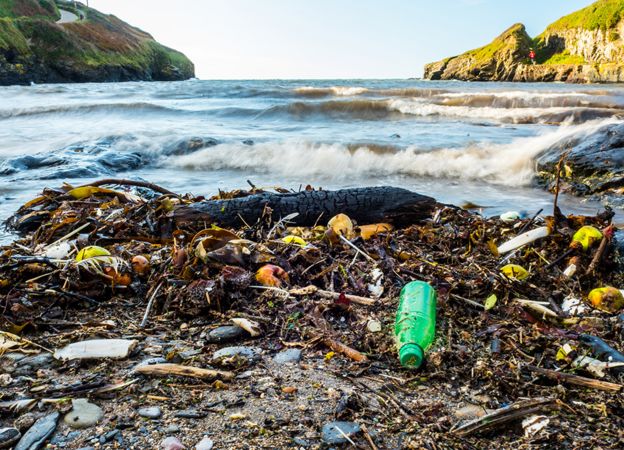

Jonathan.Amos-INTERNET@bbc.co.uk and follow me on Twitter:.
By Jonathan Amos
BBC Science Correspondent
APRIL 30, 2020
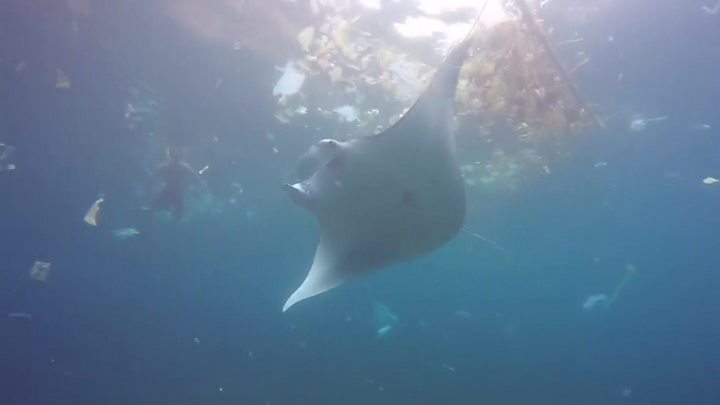
What happens to microplastics in the ocean?
VIDEOS AT THE END
Scientists have identified the highest levels of microplastics ever recorded on the seafloor.
The contamination was found in sediments pulled from the bottom of the Mediterranean, near Italy.
The analysis, led by the University of Manchester, found up to 1.9 million plastic pieces per square metre.
These items likely included fibres from clothing and other synthetic textiles, and tiny fragments from larger objects that had broken down over time.
The researchers' investigations lead them to believe that microplastics (smaller than 1mm) are being concentrated in specific locations on the ocean floor by powerful bottom currents.
"These currents build what are called drift deposits; think of underwater sand dunes," explained Dr Ian Kane, who fronted the international team.
"They can be tens of kilometres long and hundreds of metres high. They are among the largest sediment accumulations on Earth. They're made predominantly of very fine silt, so it's intuitive to expect microplastics will be found within them," he told BBC News.
APRIL 30, 2020

What happens to microplastics in the ocean?
VIDEOS AT THE END
Scientists have identified the highest levels of microplastics ever recorded on the seafloor.
The contamination was found in sediments pulled from the bottom of the Mediterranean, near Italy.
The analysis, led by the University of Manchester, found up to 1.9 million plastic pieces per square metre.
These items likely included fibres from clothing and other synthetic textiles, and tiny fragments from larger objects that had broken down over time.
The researchers' investigations lead them to believe that microplastics (smaller than 1mm) are being concentrated in specific locations on the ocean floor by powerful bottom currents.
"These currents build what are called drift deposits; think of underwater sand dunes," explained Dr Ian Kane, who fronted the international team.
"They can be tens of kilometres long and hundreds of metres high. They are among the largest sediment accumulations on Earth. They're made predominantly of very fine silt, so it's intuitive to expect microplastics will be found within them," he told BBC News.

SOURCE: I.KANE/UNI OF MANCHESTER
It's been calculated that something in the order of four to 12 million tonnes of plastic waste enter the oceans every year, mostly through rivers.
Media headlines have focussed on the great aggregations of debris that float in gyres or wash up with the tides on coastlines.
But this visible trash is thought to represent just 1% of the marine plastic budget. The exact whereabouts of the other 99% is unknown.
Some of it has almost certainly been consumed by sea creatures, but perhaps the much larger proportion has fragmented and simply sunk.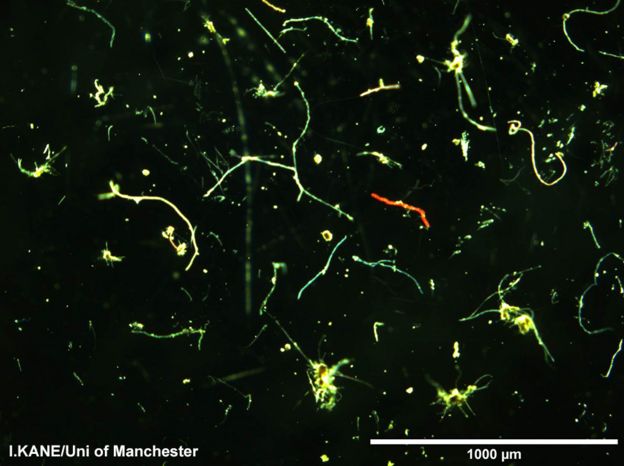
It's been calculated that something in the order of four to 12 million tonnes of plastic waste enter the oceans every year, mostly through rivers.
Media headlines have focussed on the great aggregations of debris that float in gyres or wash up with the tides on coastlines.
But this visible trash is thought to represent just 1% of the marine plastic budget. The exact whereabouts of the other 99% is unknown.
Some of it has almost certainly been consumed by sea creatures, but perhaps the much larger proportion has fragmented and simply sunk.

A lot of the fibres will come from clothing and other textiles

Dr Kane's team has already shown that deep-sea trenches and ocean canyons can have high concentrations of microplastics in their sediments.
Indeed, water tank simulations run by the group have demonstrated just how efficiently flows of mud, sand and silt of the type occurring in canyons will entrain and move fibres to even greater depths.
"A single one of these underwater avalanches ('turbidity currents') can transport tremendous volumes of sediment for 100s of kilometres across the ocean floor," said Dr Florian Pohl from Durham University.
"We're just starting to understand from recent laboratory experiments how these flows transport and bury microplastics."

Tank experiments show how underwater avalanches could transport plastic particles into the deep
There is nothing atypical about the study area in the Tyrrhenian basin between Italy, Corsica and Sardinia.
Many other parts of the globe have strong deep-water currents that are driven by temperature and salinity contrasts. The issue of concern will be that these currents also supply oxygen and nutrients to deep-sea creatures. And so by following the same route, the microplastics could be settling into biodiversity hotspots, increasing the chance of ingestion by marine life.

GETTY IMAGE
Beach plastic may be a very small fraction of the waste out there
Prof Elda Miramontes from the University of Bremen, Germany, is a co-author on the Science journal paper describing the Mediterranean discovery.
She says the same effort shown in the battle against coronavirus must now take on the scourge of ocean plastic pollution.
"We're all making an effort to improve our safety and we are all staying at home and changing our lives - changing our work life, or even stopping work," she told BBC News. "We're doing all this so that people are not affected by this sickness. We have to think in the same way when we protect our oceans."
Roland Geyer is professor of industrial ecology at the Bren School of Environmental Science and Management, University of California at Santa Barbara.
He has been at the forefront of investigating and describing the waste streams through which plastic gets into the oceans.
He commented: "We still have a very poor understanding of how much total plastic has accumulated in the oceans. There seems to be one emerging scientific consensus, which is that most of that plastic is not floating on the ocean surface.
"Many scientists now think that most of the plastic is likely to be on the ocean floor, but the water column and the beaches are also likely to contain major quantities.
"We really should all be completely focused on stopping plastic from entering the oceans in the first place."
Prof Elda Miramontes from the University of Bremen, Germany, is a co-author on the Science journal paper describing the Mediterranean discovery.
She says the same effort shown in the battle against coronavirus must now take on the scourge of ocean plastic pollution.
"We're all making an effort to improve our safety and we are all staying at home and changing our lives - changing our work life, or even stopping work," she told BBC News. "We're doing all this so that people are not affected by this sickness. We have to think in the same way when we protect our oceans."
Roland Geyer is professor of industrial ecology at the Bren School of Environmental Science and Management, University of California at Santa Barbara.
He has been at the forefront of investigating and describing the waste streams through which plastic gets into the oceans.
He commented: "We still have a very poor understanding of how much total plastic has accumulated in the oceans. There seems to be one emerging scientific consensus, which is that most of that plastic is not floating on the ocean surface.
"Many scientists now think that most of the plastic is likely to be on the ocean floor, but the water column and the beaches are also likely to contain major quantities.
"We really should all be completely focused on stopping plastic from entering the oceans in the first place."

I.KANE/UNI OF MANCHESTER
The sediments were brought up as part of work on a seafloor pipeline
Jonathan.Amos-INTERNET@bbc.co.uk and follow me on Twitter:.
JAPAN 2020
Uncovering the mystery of Japan's 'Stonehenge'
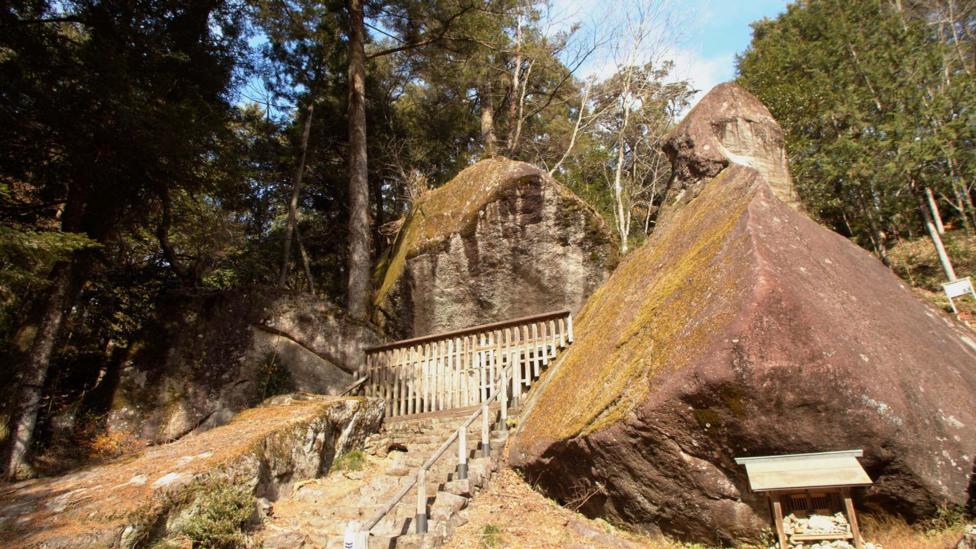
By Justyna Feicht BBC 27th April 2020
The Solar Investigators
VIDEO IS HERE
https://www.bbc.com/future/article/20200416-uncovering-the-mystery-of-japans-stonehenge
The ancient Kanayama Megaliths are extraordinary in their complexity. Across three sites, the solar observatories accurately measure not only solstices and equinoxes but also leap years.
But they would have been left hidden in the forest if it weren't for two people who stumbled upon some strange etchings in the stones.
Without any scientific background, Yoshiki Kobayashi and Shiho Tokuda set out to understand how three of the the world's most sophisticated solar observatories worked.
Uncovering the mystery of Japan's 'Stonehenge'

By Justyna Feicht BBC 27th April 2020
The Solar Investigators
VIDEO IS HERE
https://www.bbc.com/future/article/20200416-uncovering-the-mystery-of-japans-stonehenge
The ancient Kanayama Megaliths are extraordinary in their complexity. Across three sites, the solar observatories accurately measure not only solstices and equinoxes but also leap years.
But they would have been left hidden in the forest if it weren't for two people who stumbled upon some strange etchings in the stones.
Without any scientific background, Yoshiki Kobayashi and Shiho Tokuda set out to understand how three of the the world's most sophisticated solar observatories worked.
VIDEO HERE
Antarctic meteorites yield global bombardment rate
By Jonathan Amos BBC Science Correspondent
30 April 2020
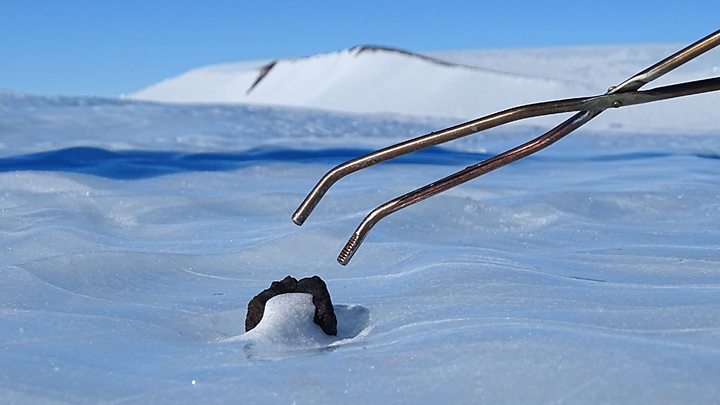
Media caption Dr Geoff Evatt: "The vast, vast majority of objects to hit the Earth are really small"
A team of UK scientists has provided a new estimate for the amount of space rock falling to Earth each year.
It's in excess of 16,000kg. This is for meteorite material above 50g in mass.
It doesn't take account of the dust that's continuously settling on the planet, and of course just occasionally we'll be hit by a real whopper of an asteroid that will skew the numbers.
But the estimate is said to give a good sense of the general quantity of rocky debris raining down from space.
"The vast, vast majority of objects to hit the Earth are really small," explained Dr Geoff Evatt.
"We're talking about objects for which, when they strike the ground, the fragments sum together to over 50g. So, typically, 50g-10kg in total. Objects bigger than this are very, very infrequent," the University of Manchester mathematician told BBC News.
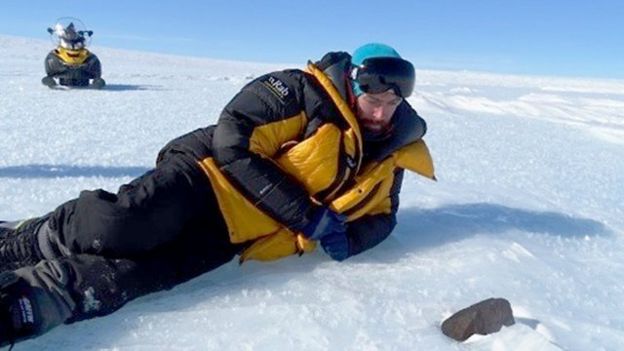
Jonathan.Amos-INTERNET@bbc.co.uk and follow me on Twitter: @BBCAmos
By Jonathan Amos BBC Science Correspondent
30 April 2020

Media caption Dr Geoff Evatt: "The vast, vast majority of objects to hit the Earth are really small"
A team of UK scientists has provided a new estimate for the amount of space rock falling to Earth each year.
It's in excess of 16,000kg. This is for meteorite material above 50g in mass.
It doesn't take account of the dust that's continuously settling on the planet, and of course just occasionally we'll be hit by a real whopper of an asteroid that will skew the numbers.
But the estimate is said to give a good sense of the general quantity of rocky debris raining down from space.
"The vast, vast majority of objects to hit the Earth are really small," explained Dr Geoff Evatt.
"We're talking about objects for which, when they strike the ground, the fragments sum together to over 50g. So, typically, 50g-10kg in total. Objects bigger than this are very, very infrequent," the University of Manchester mathematician told BBC News.

UNIVERSITY OF MANCHESTER/KATIE JOY
Black on white: Manchester scientist Romain Tartèse views a meteorite in Antarctica
One of the other outcomes of the study - produced in conjunction with colleagues from Cambridge University, Imperial College London, and the British Antarctic Survey - is that it enables a risk assessment to be made for the entire planet.
This reveals that the number of falls at the poles is about 60% of what you would expect at the equator.
It explains why you would absolutely want to put any long-term contingency facilities at higher latitudes.
The Global Seed Vault, for example, which aims to retain copies of Earth's plants in case of crisis, is sited at 78 degrees North on the Svalbard archipelago.
The new estimate, published in the journal Geology, grew out of the project to undertake the first UK-dedicated meteorite hunt in the Antarctic.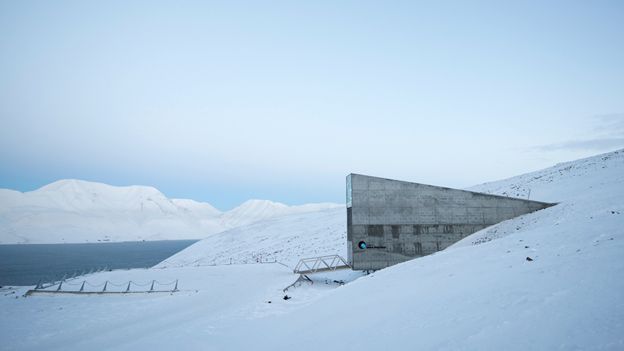
One of the other outcomes of the study - produced in conjunction with colleagues from Cambridge University, Imperial College London, and the British Antarctic Survey - is that it enables a risk assessment to be made for the entire planet.
This reveals that the number of falls at the poles is about 60% of what you would expect at the equator.
It explains why you would absolutely want to put any long-term contingency facilities at higher latitudes.
The Global Seed Vault, for example, which aims to retain copies of Earth's plants in case of crisis, is sited at 78 degrees North on the Svalbard archipelago.
The new estimate, published in the journal Geology, grew out of the project to undertake the first UK-dedicated meteorite hunt in the Antarctic.

THE CROP TRUST
The contents of the global seed vault might be needed in the aftermath of a serious impact
Researchers involved in that effort wanted to be sure they would visit the most productive areas to perform such a quest.
The White Continent is the place on Earth where most meteorites have been recovered - with good reason: the "black on white" contrast of fallen space rocks on snow and ice makes searching a lot easier.
And hunters will typically go to places where the movement of the ice sheet concentrates the meteoritic material - so called stranding zones.
Dr Evatt and colleagues worked out how many objects ought to be in their chosen area - a place called the Outer Recovery Ice Fields, close to the Shackleton range of mountains in East Antarctica.
And they were virtually bang on with their expectation, finding close to 120 meteorites in two systematic searches over 2019 and 2020.
But having worked out a reliable flux for the number of falls at their chosen terrain, the scientists realised they could then use this knowledge to anchor a global assessment.
This incorporated orbital mechanics - how Earth's gravity will pull in nearby passing material - to work out how rates might vary by latitude. The model outputs a grand total of about 17,000 falls a year.
And this can be tested by looking at the data from fireball events. Satellites in orbit tracking the lightning in storms will also catch the blazing trail of a space rock plunging into the atmosphere.
"Satellites monitor these explosions in the sky, working out the energy of the events and also the longitude and latitude of where they happen. And from this you can see how they vary across the globe with latitude, and very nicely the curve you get from these fireballs fits with what we independently modelled using purely an applied mathematical approach," said Dr Evatt.
Prof Sara Russell leads the planetary materials group at the Natural History Museum in London. She wasn't involved in the research, but commented: "I think this is an amazing study, and this estimate sounds like it is in the right sort of ballpark.
"We think a total of about 40,000 tonnes (so 40,000,000 kg) of extra-terrestrial material falls to Earth each year, but the vast majority of this is in the form of tiny dust grains.
"This is a very difficult measurement to make with any accuracy and only about half a dozen meteorites are actually seen to fall each year, but of course almost all meteorite falls are not observed because they fall in the sea, in unpopulated areas or just no-one is looking!" she told BBC News.
Fireballs reported by US Government sensors (Apr 1988 to Mar 2020)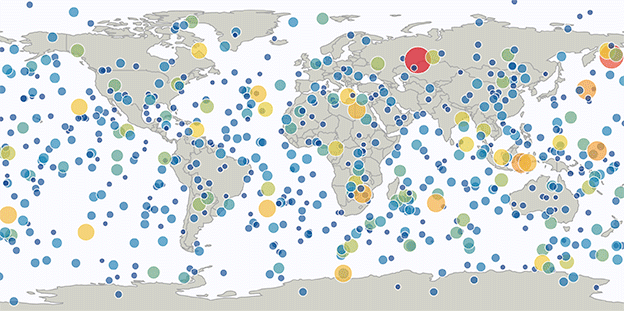
Researchers involved in that effort wanted to be sure they would visit the most productive areas to perform such a quest.
The White Continent is the place on Earth where most meteorites have been recovered - with good reason: the "black on white" contrast of fallen space rocks on snow and ice makes searching a lot easier.
And hunters will typically go to places where the movement of the ice sheet concentrates the meteoritic material - so called stranding zones.
Dr Evatt and colleagues worked out how many objects ought to be in their chosen area - a place called the Outer Recovery Ice Fields, close to the Shackleton range of mountains in East Antarctica.
And they were virtually bang on with their expectation, finding close to 120 meteorites in two systematic searches over 2019 and 2020.
But having worked out a reliable flux for the number of falls at their chosen terrain, the scientists realised they could then use this knowledge to anchor a global assessment.
This incorporated orbital mechanics - how Earth's gravity will pull in nearby passing material - to work out how rates might vary by latitude. The model outputs a grand total of about 17,000 falls a year.
And this can be tested by looking at the data from fireball events. Satellites in orbit tracking the lightning in storms will also catch the blazing trail of a space rock plunging into the atmosphere.
"Satellites monitor these explosions in the sky, working out the energy of the events and also the longitude and latitude of where they happen. And from this you can see how they vary across the globe with latitude, and very nicely the curve you get from these fireballs fits with what we independently modelled using purely an applied mathematical approach," said Dr Evatt.
Prof Sara Russell leads the planetary materials group at the Natural History Museum in London. She wasn't involved in the research, but commented: "I think this is an amazing study, and this estimate sounds like it is in the right sort of ballpark.
"We think a total of about 40,000 tonnes (so 40,000,000 kg) of extra-terrestrial material falls to Earth each year, but the vast majority of this is in the form of tiny dust grains.
"This is a very difficult measurement to make with any accuracy and only about half a dozen meteorites are actually seen to fall each year, but of course almost all meteorite falls are not observed because they fall in the sea, in unpopulated areas or just no-one is looking!" she told BBC News.

Fireballs reported by US Government sensors (Apr 1988 to Mar 2020)

A.B.CHAMBERLIN(JPL-CALTECH)
Total impact energy is indicated by a circle's relative size and by a colour.
The redder the colour, the higher the energy; the bluer the colour, the lower the energy

Jonathan.Amos-INTERNET@bbc.co.uk and follow me on Twitter: @BBCAmos
Coronavirus: Gulshan Ewing's death adds to care home tragedy
By Geeta Pandey BBC News, Delhi
1 May 2020
Related Topics
Coronavirus pandemic
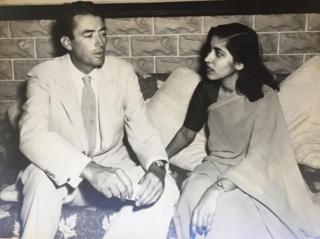
ANJALI EWING
Gulshan Ewing's daughter says Gregory Peck was her favourite Hollywood actor
A pioneering Indian journalist who mingled with some of the world's most famous celebrities has died with Covid-19 at a home for the elderly in London.
Gulshan Ewing was 92 when she died in residential care in Richmond, her daughter Anjali Ewing told the BBC.
"I was right by her side when she stopped breathing." Despite her age, her mother had no pre-existing conditions, she says.
Ewing, who edited two of India's most popular publications - women's magazine Eve's Weekly and film magazine Star & Style - from 1966 to 1989 was a celebrated editor, and a celebrity in her own right.
In his book India: A million mutinies now, Nobel laureate VS Naipaul describes her as "India's most famous female editor".
She also holds the record for the longest-ever interview that Indira Gandhi, India's first and only female prime minister, gave to any journalist.Image captionGulshan Ewing interviewed prime minister Indira Gandhi for her magazine
As the editor of Eve's Weekly, she mentored young female journalists and, as the feminist movement began to grow in India in the 1970s and 80s, led the magazine through changing times.
As the editor of Star and Style, she rubbed shoulders with the best of Hollywood and Bollywood, interviewing some of the biggest stars, writing about them and even partying with them.
In the past week, news websites have published her photographs interviewing Hollywood legends Gregory Peck, Cary Grant and Roger Moore; she's seen dining with Alfred Hitchcock, chatting with Prince Charles, posing for photographs with Ava Gardner and teaching Danny Kay how to drape a sari.
In Bollywood, says her daughter, her friendships ran deep - she dropped in on the sets of superstar Rajesh Khanna, partied with legends like Dilip Kumar, Shammi Kapoor, Dev Anand, Sunil Dutt and Nargis, and even danced with "biggest showman" Raj Kapoor.Image captionShe used to love mimicking Cary Grant's accent and would speak a few sentences in his style
Born to Parsi parents in Mumbai (then Bombay) in 1928, Ewing was among the first of a few women to join journalism in independent India. She worked for a number of publications before she was appointed editor of the two magazines. In 1990, she moved to London with her husband Guy Ewing, a British journalist she married in 1955, daughter Anjali and son Roy.
Her death comes amid growing concerns over how Britain is handling Covid-19 infections in care homes. The virus has killed thousands of elderly and vulnerable people.
Ewing had been ill for a week and died peacefully on 18 April. Her test result, confirming the coronavirus infection, came a day later.
"I spent several hours sitting with her. I held her hand, I chatted, I spoke about the family, I told her how much I loved her," Anjali says.
"She was semi-conscious, she didn't speak. I played her favourite music, a couple of old Bollywood songs and Blue Danube."Image captionEwing, seen here with Rajesh Khanna and Shammi Kapoor, was close friends with many starsImage captionShe met Bollywood superstar Amitabh Bachchan many times
As news of her death came in, some of India's best-known female journalists who had worked with her 35 or 40 years ago, began fondly remembering an editor who gave them their first break, held their hands in their first jobs, was always kind and never condescending.
"She was my editor on my very first job, hiring me after a brief interview in her office in the 1980s," Charu Shahane, who's now a BBC World Service colleague in London, told me recently.
"In those days, I was very shy and tongue-tied. She was a known figure so when I got called for an interview, I was very nervous. But she immediately put me at ease."
She remembers Ewing as "an amazing, larger than life" editor, "a gorgeous and elegant figure, always impeccably dressed, with a touch of glamour, in chiffon saris and chunky pearl necklaces, with a cigarette dangling between her fingers".Image captionDanny Kay was very curious about how she tied her sari so she showed him how to drape itImage captionGulshan Ewing with Alfred Hitchcock
Ammu Joseph, who was an assistant editor in Eve's Weekly for four years, says Gulshan Ewing didn't walk into the office, she used to "swish into the office".
"We had a crammed space, it was a tiny office and she had a small cabin, but it looked spectacular because of who she was and her manner of speaking. She was elegant, soft-spoken, so sophisticated."
When Ms Joseph joined the magazine in 1977, the women's movement was just beginning to pick up in India and the campaign against dowry deaths - young brides being killed for bringing in insufficient dowry - was building up.Image captionGulshan Ewing was very close with actor couple Sunil Dutt and Nargis (right)
"I was 24 and I was all fired up with feminist ideas," she says. Most of her colleagues were of a similar age and disposition.
But Eve's Weekly was a traditional women's magazine with the "usual ingredients" like recipes, fashion and beauty tips, and knitting patterns. The cover always featured images of aspiring models and glamorous actresses.
"But to her credit, Mrs Ewing was open to the idea of making it more contemporary, more feminist. She enabled it."
So, the young journalists wrote about domestic violence and child abuse, the magazine had a special issue on rape, including marital and custodial rape, and a provocative article on misogyny in Hindu religion - all pretty revolutionary stuff considering the stigma that still surrounds these subjects in India.
"We pushed for change. We were in our 20s, she was in her 50s. She didn't have to listen to us, but she did."Image captionShe met Prince Charles during a visit to Mumbai
Pamela Philipose, who also worked as an assistant editor at Eve's Weekly in the 1980s, says Ewing "was almost intuitively able to grasp that the changing times required a feminist sensibility".
But, Ewing herself, she says, never wrote on topics like gender equality and violence against women "and enjoyed socialising with the beautiful people".
She did socialise with the beautiful people, but it was not something she made a big deal of.
In a tribute to Gulshan Ewing, her former colleague Sherna Gandhy says the photographs published in the past few days of her with Hollywood stars and British royalty "have come as a surprise to many of us who worked with her since she never boasted of her celebrity status".
Anjali, her daughter, who is also a journalist, says she knew she had "a famous mother, but for me she was mum; she was devoted to her family and paid a lot of attention to her husband and children".Image captionBollywood legend Raj Kapoor, a personal friend, dancing with her at an event
While growing up, she remembers her mother always brought home lots of work.
"For over 20 years, she was planning and commissioning for two magazines and it was a lot of work.
"She had film stars call her at 2am to complain about something that was written about them in the magazine and she would be on the phone for an hour, trying to placate them."
After she retired to London in 1990, Ewing took a complete break from writing and journalism.
Anjali says she suggested that she write a book, but she didn't seem too keen on it.
"That was her life then, and this was her life now. She divided work as hers, and family as ours.
"I think mum was a very lucky woman, she had an amazing career, and she was loved and adored by her husband. It sounds funny to say it, but she had it all.
A pioneering Indian journalist who mingled with some of the world's most famous celebrities has died with Covid-19 at a home for the elderly in London.
Gulshan Ewing was 92 when she died in residential care in Richmond, her daughter Anjali Ewing told the BBC.
"I was right by her side when she stopped breathing." Despite her age, her mother had no pre-existing conditions, she says.
Ewing, who edited two of India's most popular publications - women's magazine Eve's Weekly and film magazine Star & Style - from 1966 to 1989 was a celebrated editor, and a celebrity in her own right.
In his book India: A million mutinies now, Nobel laureate VS Naipaul describes her as "India's most famous female editor".
She also holds the record for the longest-ever interview that Indira Gandhi, India's first and only female prime minister, gave to any journalist.Image captionGulshan Ewing interviewed prime minister Indira Gandhi for her magazine
As the editor of Eve's Weekly, she mentored young female journalists and, as the feminist movement began to grow in India in the 1970s and 80s, led the magazine through changing times.
As the editor of Star and Style, she rubbed shoulders with the best of Hollywood and Bollywood, interviewing some of the biggest stars, writing about them and even partying with them.
In the past week, news websites have published her photographs interviewing Hollywood legends Gregory Peck, Cary Grant and Roger Moore; she's seen dining with Alfred Hitchcock, chatting with Prince Charles, posing for photographs with Ava Gardner and teaching Danny Kay how to drape a sari.
In Bollywood, says her daughter, her friendships ran deep - she dropped in on the sets of superstar Rajesh Khanna, partied with legends like Dilip Kumar, Shammi Kapoor, Dev Anand, Sunil Dutt and Nargis, and even danced with "biggest showman" Raj Kapoor.Image captionShe used to love mimicking Cary Grant's accent and would speak a few sentences in his style
Born to Parsi parents in Mumbai (then Bombay) in 1928, Ewing was among the first of a few women to join journalism in independent India. She worked for a number of publications before she was appointed editor of the two magazines. In 1990, she moved to London with her husband Guy Ewing, a British journalist she married in 1955, daughter Anjali and son Roy.
Her death comes amid growing concerns over how Britain is handling Covid-19 infections in care homes. The virus has killed thousands of elderly and vulnerable people.
Ewing had been ill for a week and died peacefully on 18 April. Her test result, confirming the coronavirus infection, came a day later.
"I spent several hours sitting with her. I held her hand, I chatted, I spoke about the family, I told her how much I loved her," Anjali says.
"She was semi-conscious, she didn't speak. I played her favourite music, a couple of old Bollywood songs and Blue Danube."Image captionEwing, seen here with Rajesh Khanna and Shammi Kapoor, was close friends with many starsImage captionShe met Bollywood superstar Amitabh Bachchan many times
As news of her death came in, some of India's best-known female journalists who had worked with her 35 or 40 years ago, began fondly remembering an editor who gave them their first break, held their hands in their first jobs, was always kind and never condescending.
"She was my editor on my very first job, hiring me after a brief interview in her office in the 1980s," Charu Shahane, who's now a BBC World Service colleague in London, told me recently.
"In those days, I was very shy and tongue-tied. She was a known figure so when I got called for an interview, I was very nervous. But she immediately put me at ease."
She remembers Ewing as "an amazing, larger than life" editor, "a gorgeous and elegant figure, always impeccably dressed, with a touch of glamour, in chiffon saris and chunky pearl necklaces, with a cigarette dangling between her fingers".Image captionDanny Kay was very curious about how she tied her sari so she showed him how to drape itImage captionGulshan Ewing with Alfred Hitchcock
Ammu Joseph, who was an assistant editor in Eve's Weekly for four years, says Gulshan Ewing didn't walk into the office, she used to "swish into the office".
"We had a crammed space, it was a tiny office and she had a small cabin, but it looked spectacular because of who she was and her manner of speaking. She was elegant, soft-spoken, so sophisticated."
When Ms Joseph joined the magazine in 1977, the women's movement was just beginning to pick up in India and the campaign against dowry deaths - young brides being killed for bringing in insufficient dowry - was building up.Image captionGulshan Ewing was very close with actor couple Sunil Dutt and Nargis (right)
"I was 24 and I was all fired up with feminist ideas," she says. Most of her colleagues were of a similar age and disposition.
But Eve's Weekly was a traditional women's magazine with the "usual ingredients" like recipes, fashion and beauty tips, and knitting patterns. The cover always featured images of aspiring models and glamorous actresses.
"But to her credit, Mrs Ewing was open to the idea of making it more contemporary, more feminist. She enabled it."
So, the young journalists wrote about domestic violence and child abuse, the magazine had a special issue on rape, including marital and custodial rape, and a provocative article on misogyny in Hindu religion - all pretty revolutionary stuff considering the stigma that still surrounds these subjects in India.
"We pushed for change. We were in our 20s, she was in her 50s. She didn't have to listen to us, but she did."Image captionShe met Prince Charles during a visit to Mumbai
Pamela Philipose, who also worked as an assistant editor at Eve's Weekly in the 1980s, says Ewing "was almost intuitively able to grasp that the changing times required a feminist sensibility".
But, Ewing herself, she says, never wrote on topics like gender equality and violence against women "and enjoyed socialising with the beautiful people".
She did socialise with the beautiful people, but it was not something she made a big deal of.
In a tribute to Gulshan Ewing, her former colleague Sherna Gandhy says the photographs published in the past few days of her with Hollywood stars and British royalty "have come as a surprise to many of us who worked with her since she never boasted of her celebrity status".
Anjali, her daughter, who is also a journalist, says she knew she had "a famous mother, but for me she was mum; she was devoted to her family and paid a lot of attention to her husband and children".Image captionBollywood legend Raj Kapoor, a personal friend, dancing with her at an event
While growing up, she remembers her mother always brought home lots of work.
"For over 20 years, she was planning and commissioning for two magazines and it was a lot of work.
"She had film stars call her at 2am to complain about something that was written about them in the magazine and she would be on the phone for an hour, trying to placate them."
After she retired to London in 1990, Ewing took a complete break from writing and journalism.
Anjali says she suggested that she write a book, but she didn't seem too keen on it.
"That was her life then, and this was her life now. She divided work as hers, and family as ours.
"I think mum was a very lucky woman, she had an amazing career, and she was loved and adored by her husband. It sounds funny to say it, but she had it all.
Are Hong Kong’s pink dolphins about to disappear?
by Martin Yip
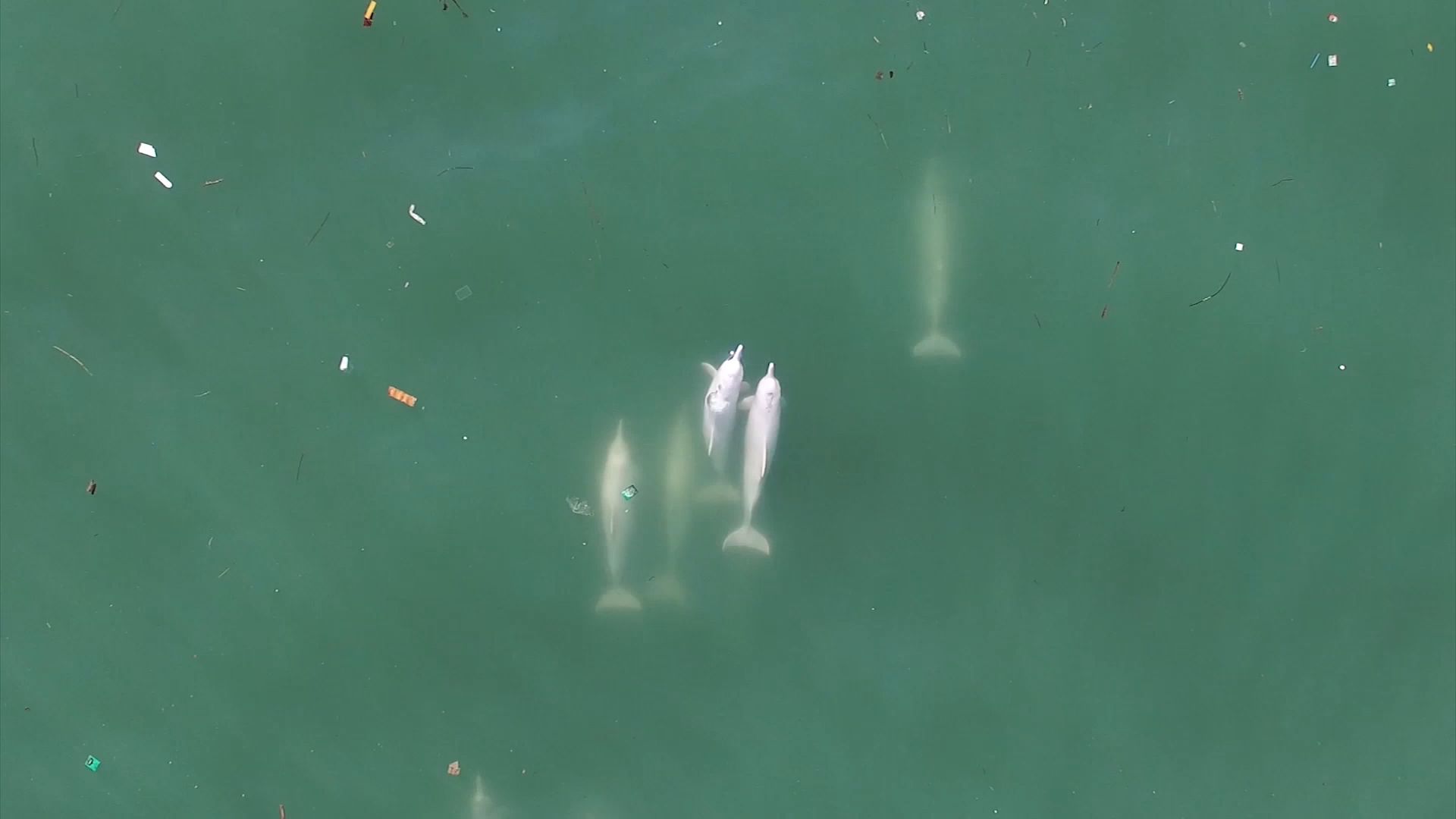
It wasn’t until the 1990s that anyone actually counted the number of pink dolphins living off the coast of Hong Kong. Construction of the city’s new international airport, Chek Lap Kok, was almost complete but in the process important dolphin habitat had been reclaimed for runways and terminal buildings. Hong Kong officials decided to check how the dolphin population was doing. They counted 250 individuals.

Today only 32 remain


Hong Kong’s pink dolphins are actually Indo-Pacific Humpback Dolphins, or Chinese White Dolphins. And their skin isn’t pink; the animals live in murky waters with little sun penetration so it simply lacks pigmentation. It is warm blood pumping through vessels close to the skin’s surface that gives the dolphins their bubblegum pink appearance.
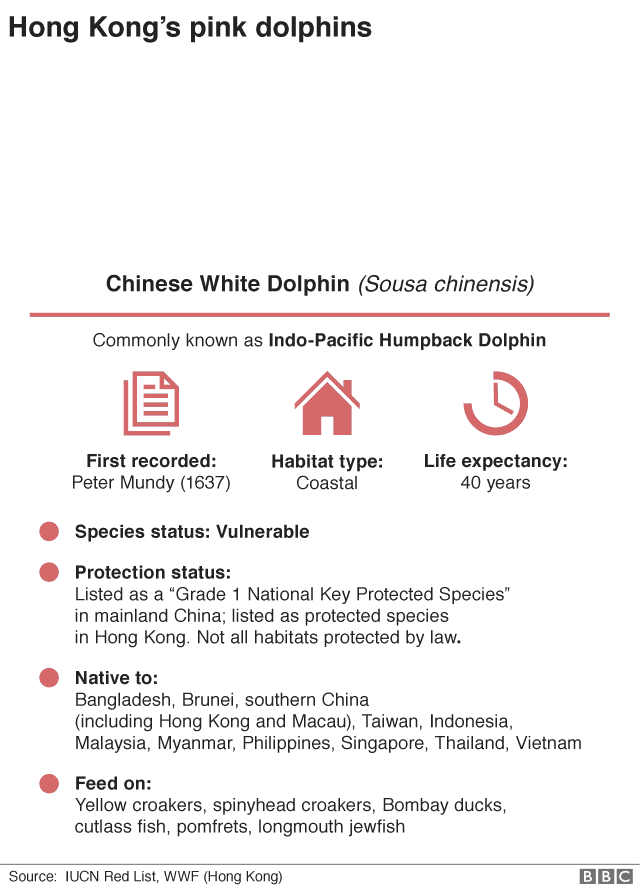
The first recorded mention of these unusual creatures was by a British man called Peter Mundy in 1637. Mundy, a merchant who helped introduce tea to the UK, described the dolphins as "sword fish", not realising they were mammals. He wrote in his journal: “The porpoises here are as white as milk, some of them ruddy withal.”
Hong Kong’s fishermen have known about the creatures for centuries. They call the dolphins Hak Kei (the Black Taboo) or Pak Kei (the White Taboo). "Once they are here, all the fishes will be gone!" says Uncle Wai, a fisherman in Tai O, a major fishing village in the western edge of the territory.
“Fishing boats don't usually follow where they go. We fishermen mostly hate them.”
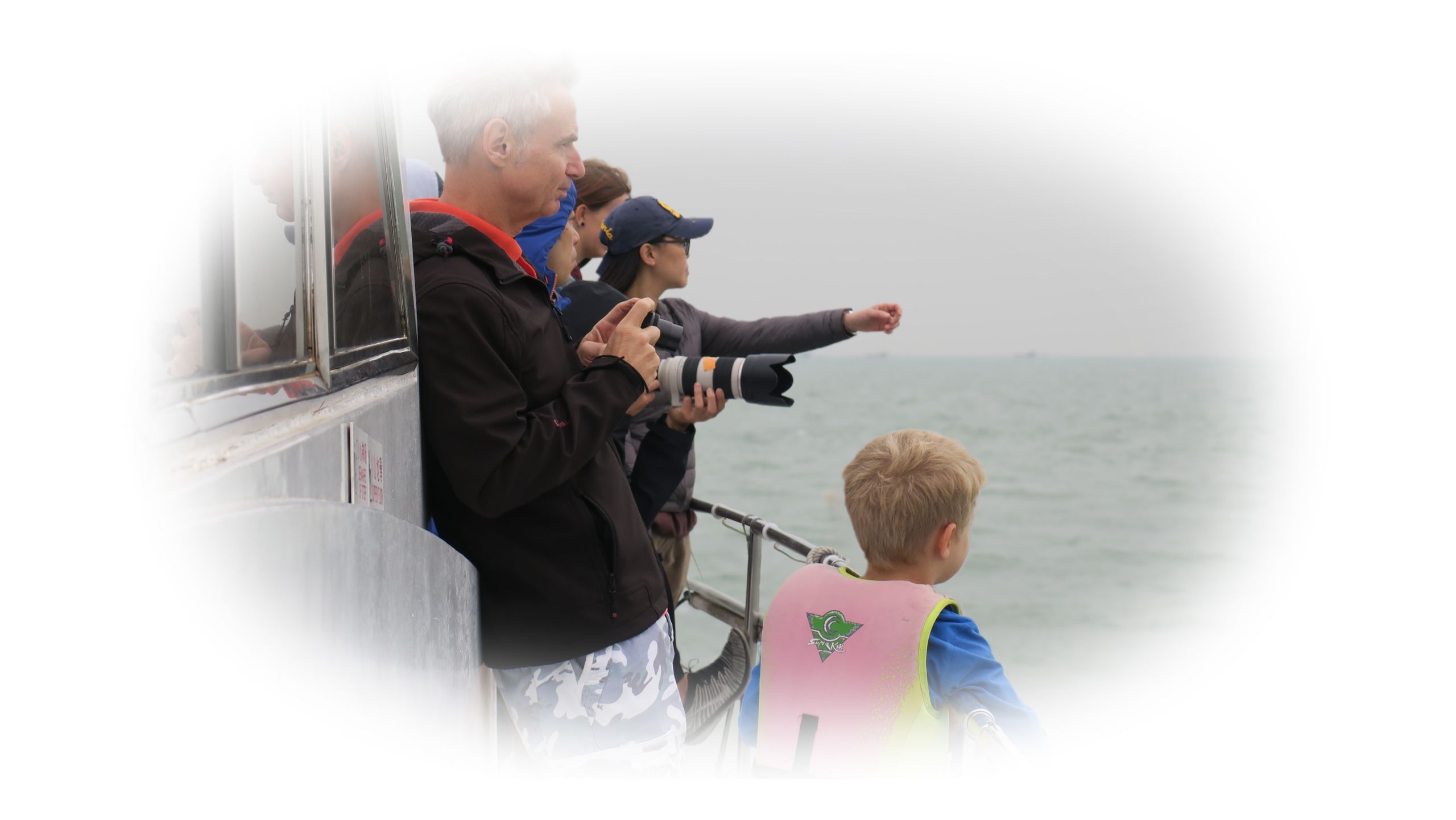
Catching a glimpse is not easy but dolphin-watching tours have become popular with tourists. When people see the dolphins for the first time, their joy is obvious.
“I’ve had some striking moments,” says Janet Walker, a senior guide with the DolphinWatch tour. "You know, amazing aerial displays and things… or like the dolphins that come and swim under your feet! Or, you know, look you in the eye.”
But Janet is worried. She’s noticed the dolphins are disappearing. "You know we are still seeing a few calves, but not that many, and the number’s still plummeting."
“I think we are very privileged to see them. Because with the amount of development that is going on around Hong Kong, especially reclamation of the sea, they are going to be gone sooner or later, I think”Chris, British tourist on the pink dolphin spotting tour
Outside of the tourism and fishing industries, pink dolphins aren’t a part of daily life for the 7.4 million people that live in the dense and bustling port of Hong Kong.
"To be frank, like many Hong Kongers, I knew little about the dolphins until I picked up this job,” says Taison Chang, chairman of the Hong Kong Dolphin Conservation Society.
"And that's the problem. Many of us were aware of them, but all we knew was the superficial stuff. We need to know about the problems they are facing before we can conserve them.”
In 2017, the population looked like it was low but stabilising. When the latest figure of 32 dolphins was released last summer, a 32% drop on the 2017-2018 period, it was a shock to conservationists like Mr Chang.
“We knew the figure would keep going down but we never thought that it would drop to just 32”Taison Chang
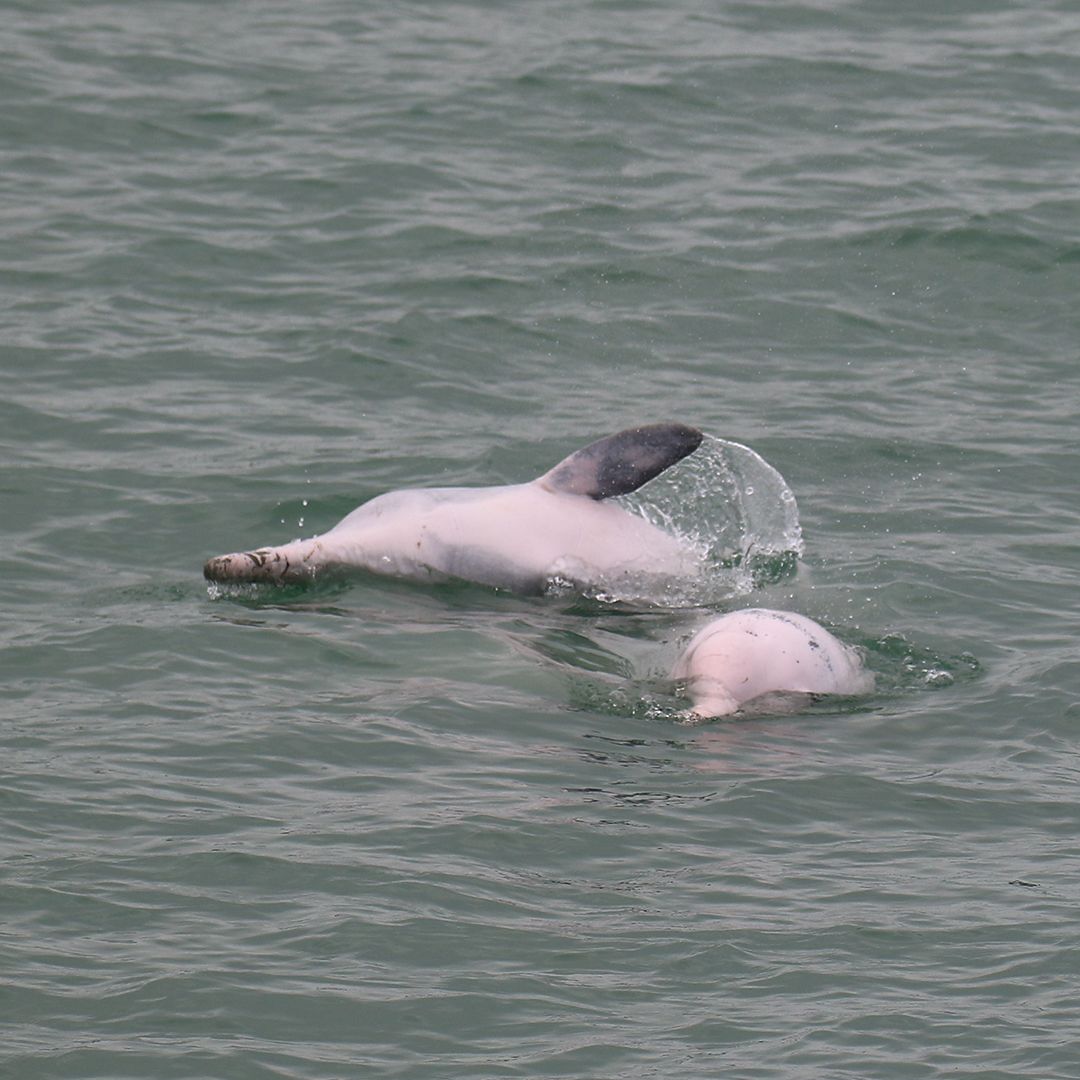
Chinese White Dolphins can be found off the west coast of Taiwan, as well as Vietnam, Thailand, and as far as Java in Indonesia in the South, and Tamil Nadu in India in the West, according to the International Union for Conservation of Nature (IUCN). While this explains why the species as a whole is not yet classified as endangered, what is clear is that their habitat along the Chinese coast has been rapidly shrinking as huge infrastructure projects reclaim marine habitat and the surrounding water becomes busy and polluted. Populations like the one in Hong Kong could disappear within a generation.
THIS IS AN EXCERPT, READ THE REST OF THIS EXCELLENT MULTIMEDIA PRESENTATION HERE AT THE BBC
Covid-19: What we can learn from wartime efforts

By Adrienne Bernhard 30th April 2020
https://www.bbc.com/future/article/20200430-covid-19-what-we-can-learn-from-wartime-efforts
Language more normally suited to wartime is commonly invoked around the Covid-19 pandemic, but can we learn anything from past conflicts in our battle against coronavirus?
In January 1941, Winston Churchill gave a sombre address to the House of Commons, the UK’s parliament. “Our Empire and indeed the whole English-speaking world are passing through a dark and deadly valley,” he remarked in one of World War Two’s bleakest periods. “But I should be failing in my duty if, on the other wise, I were not to convey the true impression, that a great nation is getting into its war stride.”
Comparisons between World War Two and the current coronavirus pandemic are prolific. New York Governor Andrew Cuomo, who has been compared to a wartime president, has peppered his daily briefings with combative language, describing the apex of the disease’s curve as “the next battle at the top of the mountain”, and proclaiming “ventilators are to this war what bombs were to World War Two”.
European leaders, meanwhile, talk of an inevitable “D-Day” when the outbreak will overwhelm the hospital system, and allude to war with an invisible enemy. Healthcare workers are on the frontlines, scientists are the new generals, economists draw up battle plans, politicians call for mobilisation. Just a few weeks ago, Queen Elizabeth II urged Britons to adopt the same discipline and resolve that the people had showed during WWII. “It reminds me of the very first broadcast I made in 1940, helped by my sister,” the monarch recalled during a rare televised address.
The coronavirus pandemic, though different from the war in many crucial respects, seems to demand some of the same measures used during that global emergency. From boosted production to rapid redeployment of resources, increased governmental oversight and stimulus plans to potential rationing, 2020’s battle against a virus might force great nations to once again adopt their war strides.
Are there lessons we can learn from the collective anxiety, the contingency measures, the calls for national cohesion and the dramatic changes to society that defined WWII? Is there is a fallacy in the modern conception of the immediate “united front” – a fallacy that will continue to play out against the backdrop of the pandemic? What does shared sacrifice look like, and how will it shape our future this time around?

The spirit of Britain's wartime leader Winston Churchill is often invoked by those urging the adoption of measures against coronavirus (Credit: Getty Images)
The extent to which wartime psychology is relevant to our understanding of the coronavirus pandemic is, like the trajectory of the disease itself, unclear and rapidly evolving. When politicians (or journalists) reach for convenient parallels between the pandemic and those wartime battles, they may make dangerous assumptions. Comparisons that rely on militarisation, organised violence or the threat of civilian control aren’t useful, and can even be harmful, especially as new information becomes available and data changes by the hour.
“If we mount a war on coronavirus, that doesn’t solve fundamental problems in the healthcare system or in global trade, for example,” says Mark R Wilson, professor of history at the University of North Carolina. “We constrain our imagination by thinking about a short-run war mobilisation.” Insidious global problems such as equipment shortages, health care disparities, lack of emergency protocols, confusion between federal and local policies, poverty and societal inequity can’t be neatly addressed by a rapid offensive against Covid-19, even if that battle is metaphoric. “There is no automatic formula for what happens during and after a crisis,” Wilson adds. “But right now, people can and should still take an interest in the past.”
Neurosurgeons, cardiologists, medical students– all have been pulled into emergency rooms and intensive care wards
During World War Two, a dire need to radically accelerate the output of items such as ships, tanks and bombers led to a mobilised wartime economy. The United States and Great Britain, in particular, converted existing factories that once made civilian products into those that could produce military equipment. Car manufacturers built army trucks instead; clock companies and plumbing industrialists designed ammunition cartridges; silk stockings were repurposed for parachutes.
Over the past month we’ve once again seen this phenomenon of conversion, as companies across the globe repurpose production lines in an effort to turn the tide of the outbreak. In just 72 hours, luxury brand Louis Vuitton began manufacturing hand sanitiser with alcohol normally used in its perfume distillery, which it then distributed to hospitals across France. General Motors, the US auto manufacturer that mass-produced tanks in World War Two, has pivoted once again, this time producing thousands of ventilators, while clothing retailers in the UK have turned from fashion to manufacturing in-demand surgical N-95 masks.

The war also spurred massive social changes, such as the development of universal health care in countries including the UK (Credit: Getty Images)
Airlines across the globe have begun chartered flights to repatriate stranded nationals abroad and transport health care workers and medical supplies to deeply impacted regions. Hospital ships such as the USNS Comfort, designed to treat casualties of war, now offer a relief valve for hospitals overwhelmed with Covid-19 patients.
This redeployment calculus applies not just to goods and services but to human capital as well. Neurosurgeons, cardiologists, medical student – all have been pulled into emergency rooms and intensive care wards. Receptionists who normally deal with billing are suddenly tasked with screening coronavirus patients, making up for an acute shortage of personnel. Restaurant workers prepare and deliver meals in bulk to exhausted emergency care nurses, parents have become full-time teachers to their children, hotel managers are being trained in hospital protocol as they open their doors to health care workers.
During World War Two, the measures used to ramp up production took months to implement; today, it would appear that we had not months, but weeks. And our current efforts seem patchwork at best. World War Two’s unprecedented mobilisation effort, by contrast – its dramatic output, profit control and federal regulation – might serve as a blueprint during the next phase of the coronavirus outbreak. As they did during the war, officials could opt to fund brand new factories and equip them with machinery and tools (in this case, ventilators or personal protective gear).
The short-term financial cost of these measures would be enormous, but the payoff could be too
By establishing dedicated Covid-19 facilities rather than converting existing ones, governments would expand capacity and absorb risk. Over the next several months, these factories could implement production lines to speed the creation of antibody tests and a vaccine. And authorities could further regulate the crisis standard of care – allocating treatment to certain patients – and ration medical equipment or even food.
The short-term financial cost of these measures would be enormous, but the payoff could be too. Indeed, rapid government intervention in the months following the coronavirus outbreak has already shown signs of success. In China, for example, thousands of workers built a field hospital on government orders; modular construction and rapid mobilisation meant that thousands more Covid-19 patients could be treated in a matter of days.
Federally mandated social distancing has also worked to compress the timeline – a kind of individual sacrifice reminiscent of wartime strain on the home front. World War Two’s iconic message of “equality of sacrifice,” emphasised by labour leaders and union officials and propagated through steep progressive taxes and government regulations, would be hard to sustain in today’s political and financial landscape. But in recent weeks, people have shown a desire to comply, even to make personal sacrifices for the greater good.

During World War Two, factories which had once made cars were quickly reorganised to make weapons such as these British bombers (Credit: Getty Images)
“People are turning to war as a metaphor because of the mobilising aspects of war,” says Mary L Dudziak, a law professor at Emory University who has published widely on the concept of wartime in US history. “But a pandemic is not a ‘war’. A country responds to war by killing other people: death is the means of war. In a pandemic, the means of responding is not killing other people but instead trying to preserve life.”
The desire to comply, to make personal sacrifices, these are no longer for the purpose of destruction, but for a greater good that is truly good: mutual assistance across nations and the safeguarding of human life
“Moments of crisis can provide opportunities for reform,” says Wilson. World War Two brought national healthcare reforms, gave rise to international organisations like the United Nations and the International Monetary Fund, and in the US led to the introduction of the GI Bill, which detailed important benefits for soldiers returning from war.
There will be no “return to normalcy” after the coronavirus pandemic
Of course, not all reforms at the time were sweeping in scope. While the UK’s universal health care system, the National Health Service (NHS), emerged out of World War Two, the US ended up with a far less robust system; many were left uninsured. The coronavirus crisis might bring about similar reforms; for example, targeted compensation packages for health care workers or grocery store staff. Or it might engender an entirely restructured economy, resulting in universal health care or increased job security. At the very least, we can expect to see a new generation of political leaders and thinkers to come out of it.
Consider the scientific experts now on the front lines. Just as generals take the lead in giving daily briefings in wartime, medical experts like Anthony Fauci are at the microphone to explain complex ideas like epidemic curves, social distancing and off-label use of drugs. Healthcare professionals are perhaps the new wartime generals.
After World War Two, much of Europe and Asia lay in ruins. The figures are difficult to grasp – nearly 60 million dead. Indeed, 1945 has often been referred to as Year Zero: a new way to mark time before and after the war’s destruction. People the world over confronted a landscape that had been changed forever, marked by deprivation but also by hope. Government expenditures helped bring about the business recovery that had eluded President Roosevelt’s New Deal .

While the industrial conversion hasn't been as dramatic as turning tractor factories into tank plants, it has been widespread and rapid (Credit: Getty Images)
Throughout the US and Europe, wartime mobilisation and ingenuity secured employment and a fairer distribution of income, while creating entirely new technologies, industries and associated human skills. Old ideological constraints collapsed, but new ideas about capital, entrepreneurship, and social bonds emerged. These extraordinarily ambitious efforts – civilian and federal, at home and abroad – meant that nations could ultimately recover.
To misquote a post-war US presidential candidate, there will be no “return to normalcy” after the coronavirus pandemic. From the comfort of our homes, we may sit and leaf through the pages of history, imagining various after-lesson actions – but we know for certain only that nothing can be certain.
Yet, this crisis has arguably spurred mobilisation on an international scale not seen since the war 80 years ago. The pandemic demands quick crash efforts with high stakes, has united people across the world, and promises to accelerate seismic global changes which could last for years to come.
Then, as now, we might take some courage in the Queen’s wartime vow: “We will be with our friends again. We will be with our families again. We will meet again.”

By Adrienne Bernhard 30th April 2020
https://www.bbc.com/future/article/20200430-covid-19-what-we-can-learn-from-wartime-efforts
Language more normally suited to wartime is commonly invoked around the Covid-19 pandemic, but can we learn anything from past conflicts in our battle against coronavirus?
In January 1941, Winston Churchill gave a sombre address to the House of Commons, the UK’s parliament. “Our Empire and indeed the whole English-speaking world are passing through a dark and deadly valley,” he remarked in one of World War Two’s bleakest periods. “But I should be failing in my duty if, on the other wise, I were not to convey the true impression, that a great nation is getting into its war stride.”
Comparisons between World War Two and the current coronavirus pandemic are prolific. New York Governor Andrew Cuomo, who has been compared to a wartime president, has peppered his daily briefings with combative language, describing the apex of the disease’s curve as “the next battle at the top of the mountain”, and proclaiming “ventilators are to this war what bombs were to World War Two”.
European leaders, meanwhile, talk of an inevitable “D-Day” when the outbreak will overwhelm the hospital system, and allude to war with an invisible enemy. Healthcare workers are on the frontlines, scientists are the new generals, economists draw up battle plans, politicians call for mobilisation. Just a few weeks ago, Queen Elizabeth II urged Britons to adopt the same discipline and resolve that the people had showed during WWII. “It reminds me of the very first broadcast I made in 1940, helped by my sister,” the monarch recalled during a rare televised address.
The coronavirus pandemic, though different from the war in many crucial respects, seems to demand some of the same measures used during that global emergency. From boosted production to rapid redeployment of resources, increased governmental oversight and stimulus plans to potential rationing, 2020’s battle against a virus might force great nations to once again adopt their war strides.
Are there lessons we can learn from the collective anxiety, the contingency measures, the calls for national cohesion and the dramatic changes to society that defined WWII? Is there is a fallacy in the modern conception of the immediate “united front” – a fallacy that will continue to play out against the backdrop of the pandemic? What does shared sacrifice look like, and how will it shape our future this time around?

The spirit of Britain's wartime leader Winston Churchill is often invoked by those urging the adoption of measures against coronavirus (Credit: Getty Images)
The extent to which wartime psychology is relevant to our understanding of the coronavirus pandemic is, like the trajectory of the disease itself, unclear and rapidly evolving. When politicians (or journalists) reach for convenient parallels between the pandemic and those wartime battles, they may make dangerous assumptions. Comparisons that rely on militarisation, organised violence or the threat of civilian control aren’t useful, and can even be harmful, especially as new information becomes available and data changes by the hour.
“If we mount a war on coronavirus, that doesn’t solve fundamental problems in the healthcare system or in global trade, for example,” says Mark R Wilson, professor of history at the University of North Carolina. “We constrain our imagination by thinking about a short-run war mobilisation.” Insidious global problems such as equipment shortages, health care disparities, lack of emergency protocols, confusion between federal and local policies, poverty and societal inequity can’t be neatly addressed by a rapid offensive against Covid-19, even if that battle is metaphoric. “There is no automatic formula for what happens during and after a crisis,” Wilson adds. “But right now, people can and should still take an interest in the past.”
Neurosurgeons, cardiologists, medical students– all have been pulled into emergency rooms and intensive care wards
During World War Two, a dire need to radically accelerate the output of items such as ships, tanks and bombers led to a mobilised wartime economy. The United States and Great Britain, in particular, converted existing factories that once made civilian products into those that could produce military equipment. Car manufacturers built army trucks instead; clock companies and plumbing industrialists designed ammunition cartridges; silk stockings were repurposed for parachutes.
Over the past month we’ve once again seen this phenomenon of conversion, as companies across the globe repurpose production lines in an effort to turn the tide of the outbreak. In just 72 hours, luxury brand Louis Vuitton began manufacturing hand sanitiser with alcohol normally used in its perfume distillery, which it then distributed to hospitals across France. General Motors, the US auto manufacturer that mass-produced tanks in World War Two, has pivoted once again, this time producing thousands of ventilators, while clothing retailers in the UK have turned from fashion to manufacturing in-demand surgical N-95 masks.

The war also spurred massive social changes, such as the development of universal health care in countries including the UK (Credit: Getty Images)
Airlines across the globe have begun chartered flights to repatriate stranded nationals abroad and transport health care workers and medical supplies to deeply impacted regions. Hospital ships such as the USNS Comfort, designed to treat casualties of war, now offer a relief valve for hospitals overwhelmed with Covid-19 patients.
This redeployment calculus applies not just to goods and services but to human capital as well. Neurosurgeons, cardiologists, medical student – all have been pulled into emergency rooms and intensive care wards. Receptionists who normally deal with billing are suddenly tasked with screening coronavirus patients, making up for an acute shortage of personnel. Restaurant workers prepare and deliver meals in bulk to exhausted emergency care nurses, parents have become full-time teachers to their children, hotel managers are being trained in hospital protocol as they open their doors to health care workers.
During World War Two, the measures used to ramp up production took months to implement; today, it would appear that we had not months, but weeks. And our current efforts seem patchwork at best. World War Two’s unprecedented mobilisation effort, by contrast – its dramatic output, profit control and federal regulation – might serve as a blueprint during the next phase of the coronavirus outbreak. As they did during the war, officials could opt to fund brand new factories and equip them with machinery and tools (in this case, ventilators or personal protective gear).
The short-term financial cost of these measures would be enormous, but the payoff could be too
By establishing dedicated Covid-19 facilities rather than converting existing ones, governments would expand capacity and absorb risk. Over the next several months, these factories could implement production lines to speed the creation of antibody tests and a vaccine. And authorities could further regulate the crisis standard of care – allocating treatment to certain patients – and ration medical equipment or even food.
The short-term financial cost of these measures would be enormous, but the payoff could be too. Indeed, rapid government intervention in the months following the coronavirus outbreak has already shown signs of success. In China, for example, thousands of workers built a field hospital on government orders; modular construction and rapid mobilisation meant that thousands more Covid-19 patients could be treated in a matter of days.
Federally mandated social distancing has also worked to compress the timeline – a kind of individual sacrifice reminiscent of wartime strain on the home front. World War Two’s iconic message of “equality of sacrifice,” emphasised by labour leaders and union officials and propagated through steep progressive taxes and government regulations, would be hard to sustain in today’s political and financial landscape. But in recent weeks, people have shown a desire to comply, even to make personal sacrifices for the greater good.

During World War Two, factories which had once made cars were quickly reorganised to make weapons such as these British bombers (Credit: Getty Images)
“People are turning to war as a metaphor because of the mobilising aspects of war,” says Mary L Dudziak, a law professor at Emory University who has published widely on the concept of wartime in US history. “But a pandemic is not a ‘war’. A country responds to war by killing other people: death is the means of war. In a pandemic, the means of responding is not killing other people but instead trying to preserve life.”
The desire to comply, to make personal sacrifices, these are no longer for the purpose of destruction, but for a greater good that is truly good: mutual assistance across nations and the safeguarding of human life
“Moments of crisis can provide opportunities for reform,” says Wilson. World War Two brought national healthcare reforms, gave rise to international organisations like the United Nations and the International Monetary Fund, and in the US led to the introduction of the GI Bill, which detailed important benefits for soldiers returning from war.
There will be no “return to normalcy” after the coronavirus pandemic
Of course, not all reforms at the time were sweeping in scope. While the UK’s universal health care system, the National Health Service (NHS), emerged out of World War Two, the US ended up with a far less robust system; many were left uninsured. The coronavirus crisis might bring about similar reforms; for example, targeted compensation packages for health care workers or grocery store staff. Or it might engender an entirely restructured economy, resulting in universal health care or increased job security. At the very least, we can expect to see a new generation of political leaders and thinkers to come out of it.
Consider the scientific experts now on the front lines. Just as generals take the lead in giving daily briefings in wartime, medical experts like Anthony Fauci are at the microphone to explain complex ideas like epidemic curves, social distancing and off-label use of drugs. Healthcare professionals are perhaps the new wartime generals.
After World War Two, much of Europe and Asia lay in ruins. The figures are difficult to grasp – nearly 60 million dead. Indeed, 1945 has often been referred to as Year Zero: a new way to mark time before and after the war’s destruction. People the world over confronted a landscape that had been changed forever, marked by deprivation but also by hope. Government expenditures helped bring about the business recovery that had eluded President Roosevelt’s New Deal .

While the industrial conversion hasn't been as dramatic as turning tractor factories into tank plants, it has been widespread and rapid (Credit: Getty Images)
Throughout the US and Europe, wartime mobilisation and ingenuity secured employment and a fairer distribution of income, while creating entirely new technologies, industries and associated human skills. Old ideological constraints collapsed, but new ideas about capital, entrepreneurship, and social bonds emerged. These extraordinarily ambitious efforts – civilian and federal, at home and abroad – meant that nations could ultimately recover.
To misquote a post-war US presidential candidate, there will be no “return to normalcy” after the coronavirus pandemic. From the comfort of our homes, we may sit and leaf through the pages of history, imagining various after-lesson actions – but we know for certain only that nothing can be certain.
Yet, this crisis has arguably spurred mobilisation on an international scale not seen since the war 80 years ago. The pandemic demands quick crash efforts with high stakes, has united people across the world, and promises to accelerate seismic global changes which could last for years to come.
Then, as now, we might take some courage in the Queen’s wartime vow: “We will be with our friends again. We will be with our families again. We will meet again.”
Subscribe to:
Posts (Atom)



































